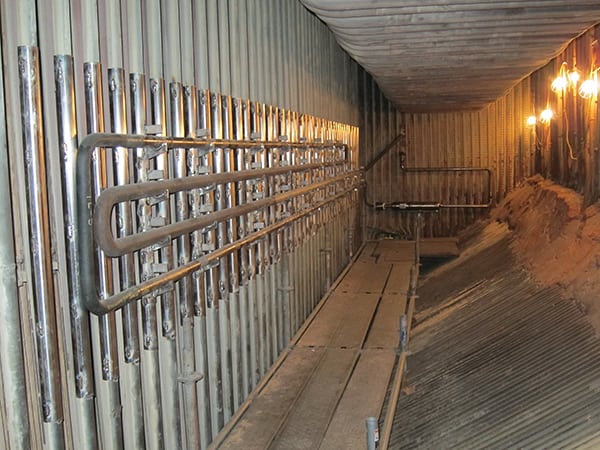Alstom Reports Major Boost for Advanced Ultrasupercritical Technology
The trial operation of a steam loop for more than 17,000 hours at temperatures exceeding 760C (1,400F)—the highest ever tested at a pulverized coal plant—have wrapped up at Plant Barry Unit 4 in Alabama, and all components appear to have retained their original mechanical integrity, Alstom reported in early December.
The achievement represents a major development boost for advanced ultrasupercritical (AUSC) technology, which uses steam cycles with temperatures of 700C to 760C to increase the net electrical efficiency of a pulverized coal plant. Maximum steam temperatures are limited by the properties of the materials used in high-temperature components, which typically lose strength as temperature rises.
As Kyle Nicol, a process consultant for the International Energy Agency’s Clean Coal Centre, explained to POWER, historically, steam temperatures have increased alongside the development of steels—from subcritical steam temperatures to supercritical, and now ultrasupercritical. “However, further development of steels has been negligible—the steel barrier has been reached,” he said.
That means there’s a race to develop advanced new materials that support AUSC steam temperatures for a service lifetime of 20 to 40 years at experimental power plant programs in the U.S., the European Union, Russia, Japan, China, and India. As of December 2013, programs in the U.S., China, Japan, and India had largely completed small-scale laboratory tests and had advanced to manufacturing large-scale components and testing them in a components test facility.
The European program—which was the first to begin developing AUSC technology in the late 1990s—successfully tested large-scale boiler components and valves at the COMTES700 facility at steam temperatures of 700C, but “technical difficulties” stalled further progress, said Nicol. India, in particular, said it is on track to begin operating a full-scale demonstration plant by 2018. “Assuming successful operation of a [full-scale demonstration plant], the commercialization of [an AUSC pulverized coal] power plant will rest entirely on the plant economics in 2027, which depend on variable factors such as the future value of coal, cost of nickel alloys, and a carbon tax.”
In that context, Alstom’s achievement at Southern Co.’s Plant Barry is significant. The company’s boiler research team in Windsor, Conn., designed the steam loop. It was fabricated by Alstom’s factory in Chattanooga, Tenn., and installed at Plant Barry in December 2011. The trial is backed by a consortium that includes the U.S. Department of Energy’s National Energy Technology Laboratory and the Ohio Coal Development Office, which is validating superalloy materials for use at the extreme conditions of AUSC plants.
Alstom, which also participated in the European AUSC material and boiler program, said the Plant Barry loop contained a “unique combination of 94 specimens with eight different superalloys and three different surface coatings” that enabled it to withstand the high AUSC temperatures within the coal-fired boiler (Figure 3). “Upon removal, the components appeared in good condition and retained their original mechanical integrity,” it added. The components are now undergoing an extensive corrosion, oxidation, and material properties examination at Alstom’s Material Technology Center in Chattanooga.
Because AUSC technology has myriad benefits—including increasing net plant efficiency by about 9% when compared to ultrasupercritical steam temperatures of 600C, reducing emissions and flue gas volumes—development work is still needed on materials as well as boiler design, the company said.
